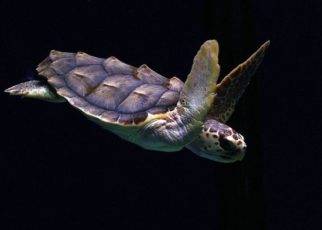In 1973, the Endangered Species Act went into affect. This act sought to protect six different species of turtles, including the loggerheads that nest at Hunting Island by making it a crime to harm, kill, or harass these endangered species. Years ago, many hunters sought loggerheads for their eggs, meat, and fat. Today, fishing nets pose one of the largest threats to the loggerhead turtle population.
As development became popular on the coast, artificial lighting began to increase. This nighttime lighting caused a significant decrease in nesting attempts by loggerhead turtles, and many hatchlings become confused by the lights and large numbers became disoriented and eventually died.
On May 1, 2002, Beaufort County enacted the “Lights Out” program that prohibits artificial lighting visible from any barrier island, beach, or dune from dusk to dawn from May 1 until October 31 each year. This includes flash photography and flashlights. Lights after dark can cause several problems, such as
A “false crawl” in which a turtle comes onto shore but does not lay eggs
The female turtle may abandon her nest
Hatchlings may fail to crawl back to shore
Local efforts include a regular patrol of the beach at 6 a.m. during nesting season. Friends of Hunting Island, the volunteers who work to protect the natural ecosystem of the area, also attempt to preserve the often precarious nesting grounds by planting sea oats and dune grasses to control constant erosion, relocating nests in unsuitable locations, helping to collect data regarding the nests, and picking up trash along the beach.
Efforts of the Friends of Hunting Island have not gone unnoticed or unappreciated. In 2007, their efforts helped to ensure that 4,294 loggerhead hatchlings made it back to shore. They also picked up over 450 bags of trash and collected data and pictures that are provided on their web site. These volunteers also offer educational opportunities for campers and others who visit Hunting Island State Park.
Campers and others at Hunting Island State Park are instructed to stay away from turtle nests, which are identified and staked by the volunteers on turtle patrol. Pets must be on a leash. Wild animals, such as raccoons, can also threaten the survival of the loggerheads. Weather can pose a threat to the turtle nests with unusually high tides or unseasonal temperatures that cool the sand to less than 70 degrees.





